“Why does my Peace Lily have brown leaf tips? What am I doing wrong?” These are some of the frequent questions that are often heard when it comes to growing peace lilies indoors.
Peace Lily are lovely plants appreciated for their elegant white flowers known as spathes amid long dark green foliage. Unfortunately, this naturally elegant houseplant can suffer from brown-tipped leaves and totally brown leaves. This article will cover why you might see peace lily brown tips, peace lily brown leaves, and peace lily flowers turning brown.
Make sure your Peace Lily thrives with lush green leaves and vibrant blooms, get to know some effective care tips today!
- Related article: How to Grow Peace Lilies
7 Key Takeaways on Peace Lily Leaves Turning Brown
- Water your Peace Lily once or twice a week. The soil should be moist but not soggy. Always let the excess water drain out.
- Keep your plant in a room that stays between 68°F and 85°F. Avoid places with cold drafts or near heat sources.
- Place your Peace Lily in bright, indirect sunlight. Direct sunlight can burn the leaves, causing browning.
- Use clean shears to cut off brown or black leaves. Don’t remove more than one-third of the plant at a time.
- Peace Lilies love humidity. Mist the leaves or use a pebble tray to increase moisture around the plant.
- Refresh the soil with a fresh potting mix that has good drainage, like rice hulls. This helps prevent browning leaves and supports growth.
- Make sure the pot is the right size for your Peace Lily. A pot that’s too small can stress the plant, leading to browning leaves.
Peace Lily With Brown Leaves and Tips – Reasons and Solutions
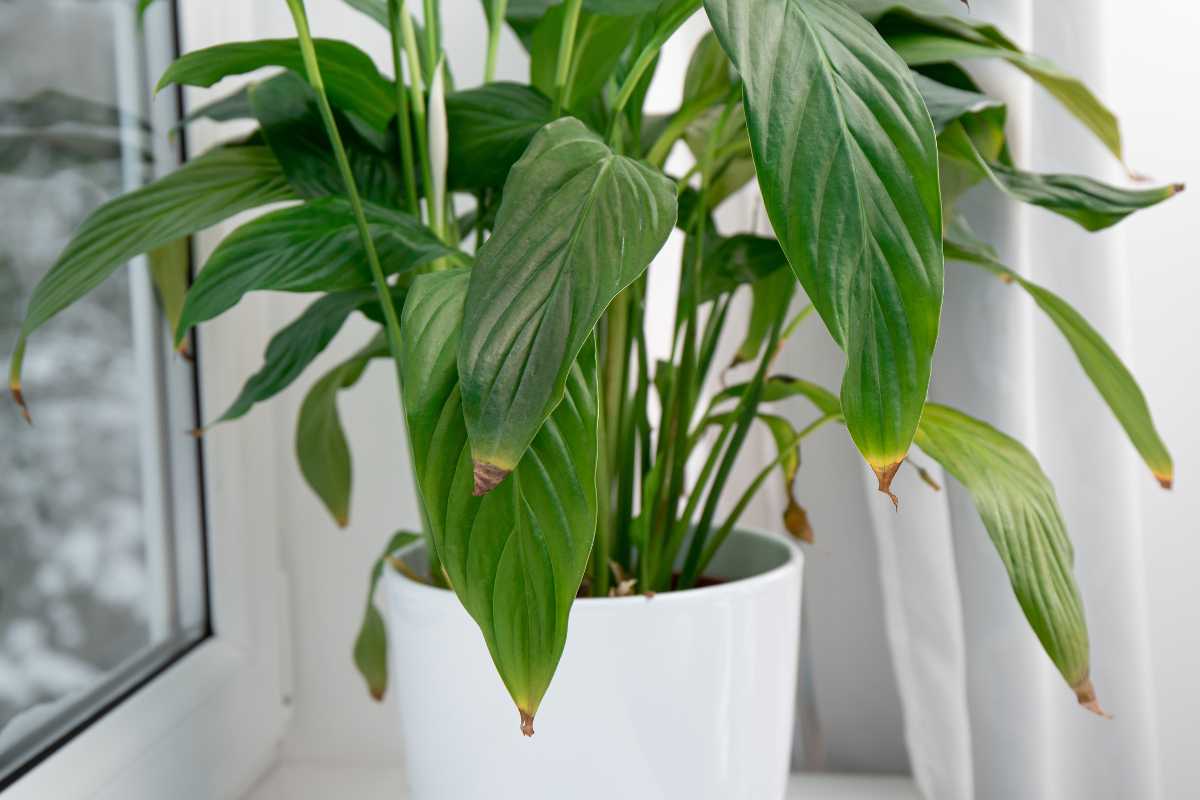
These are some of the most common brown leaf tips causes and how to fix them.
1. Underwatering or Overwatering
Watering peace lilies just right can be a bit of a puzzle. These plants ask for a careful touch with water. Too much water and you’ll see brown tips on the leaves. Not enough, and the leaves get sad and droopy. The trick is to keep looking for that sweet spot where your peace lily is happy and healthy.
Solution for Watering Peace Lilies:
- Peace lilies like their soil to be moist but not soaked. Make sure the pot has good holes at the bottom to let water out. This stops the soil from getting too wet, which can hurt the plant.
- Water your peace lily once or twice a week. A good sign it’s time to water is when the leaves start to droop a little. But try not to let it get too dry between waterings.
- If you use tap water, let it sit out for a day before watering. This helps get rid of chlorine, which isn’t good for the plant. You can also use a tap water conditioner to neutralize chlorine and other harmful chemicals, making the water safer for your Peace Lily.
- For a deep clean and water, take the plant out of its pretty pot. Give it a nice shower and let the extra water drain out completely.
2. Environmental Conditions
These plants come from warm tropical places, so they like it warm and steady, just like home. If they get too cold or hit with chilly drafts, they can get really stressed out. If it gets too cold, especially below 40°F, you’ll see problems like brown tips on the leaves and the plant getting weak.
Solution for Temperature Around Peace Lilies:
- A warm, steady spot helps stop brown tips on the leaves and keeps your peace lily thriving.
- Keep your peace lily in a room that’s between 68°F and 85°F.
- It’s okay if it gets a bit cooler at night, but don’t let it stay below 40°F for long.
- Keep the plant away from air conditioners, vents, and drafts from windows and doors to stop the leaves from getting hurt.
3. Overfeeding or Overfertilization
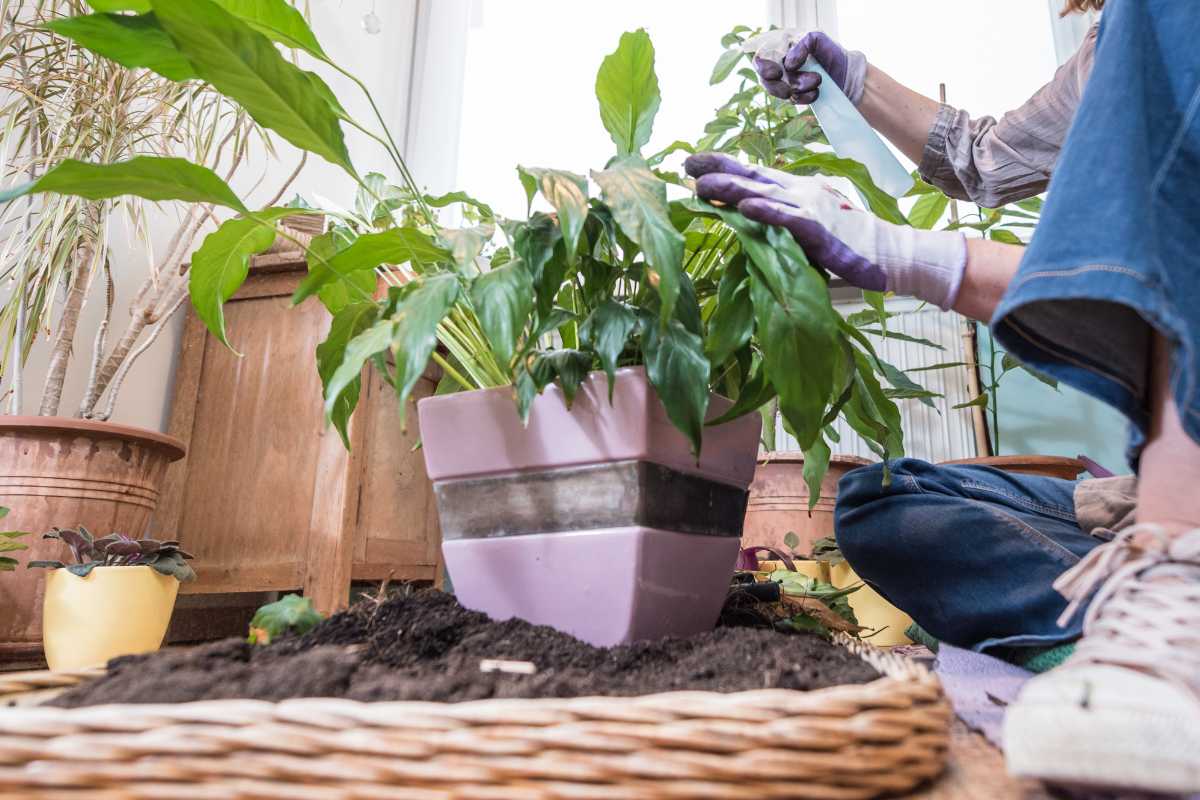
If you’re seeing brown tips on your peace lily’s leaves, it might be getting too much fertilizer. These plants are pretty easygoing and don’t need a lot of extra food. When you overfeed them, salts build up in the soil.
This messes with the roots and turns the leaf tips brown. Peace lilies don’t handle a lot of extra nutrients well, so it’s easy to give them too much if you fertilize too often or with too much.
Solution for Overfeeding Peace Lilies:
- Fertilize your peace lily just four times a year.
- Use a weak mix of 20-20-20 fertilizer or any indoor plant food.
- By keeping the fertilizer light and not too frequent, you can stop the brown tips and help your plant do well.
- Remember, they need very little extra food to stay happy.
4. Lack of Humidity
Peace lilies love humidity, just like their tropical home. But indoors, especially when it’s cold or we’re using air conditioning, the air can get pretty dry. This dryness can make peace lily leaves turn brown at the tips, showing they’re not happy. To keep our peace lilies thriving, we need to make the air around them nice and humid, like a rainforest.
Solution for Increasing Humidity for Peace Lilies:
- Mist your peace lily plant with non-chlorinated water a few times a week to give it a refreshing shower.
- Create a pebble tray: Fill a tray with pebbles and water, place your plant on top, but make sure the holes at the bottom don’t touch the water. As the water goes up into the air, it will make the space around the plant humid.
- Use a plant humidifier to keep the air just right for your peace lily all the time.
5. Pest Infestation
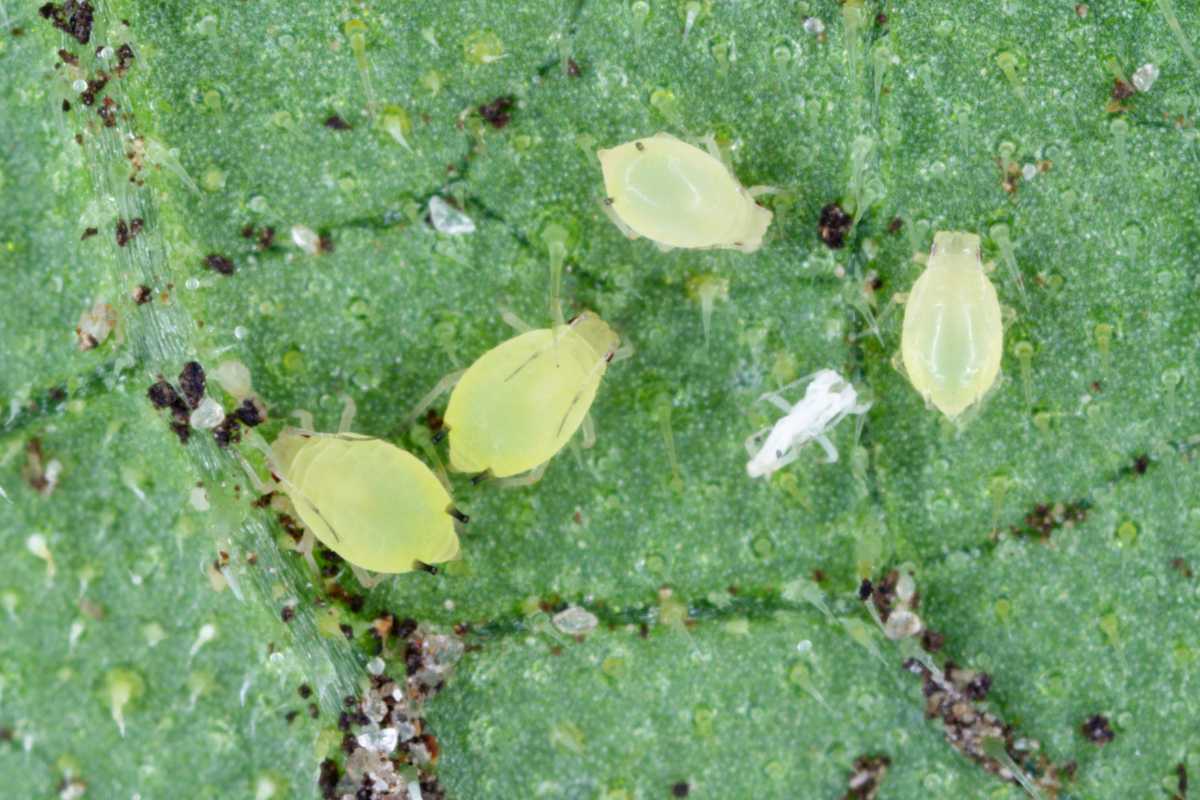
Peace lilies, like many houseplants, can attract pests such as aphids, mealybugs, and spider mites. These pests are a problem because they can make the plant weak, damaging its leaves and health if not dealt with quickly.
Mealybugs are especially tough to get rid of because their waxy coating protects them from some treatments. While pesticides can be effective, peace lilies don’t react well to chemicals, so it’s important to use them carefully to keep the plant safe.
Solution on How to Handle Pests on Your Peace Lily:
- Use a plant insecticide spray, including organic options like neem oil, to treat pests.
- Start with the mildest treatments and only use stronger ones if necessary to keep your plant healthy and pest-free.
- For pests like aphids and mealybugs, insecticides with Resmethrin can be effective.
- Since peace lilies are sensitive to chemicals, apply insecticide sparingly.
- Start with the mildest treatments and only use stronger ones if necessary to keep your plant healthy and pest-free.
8. Excessive Sunlight Exposure to the Peace Lily
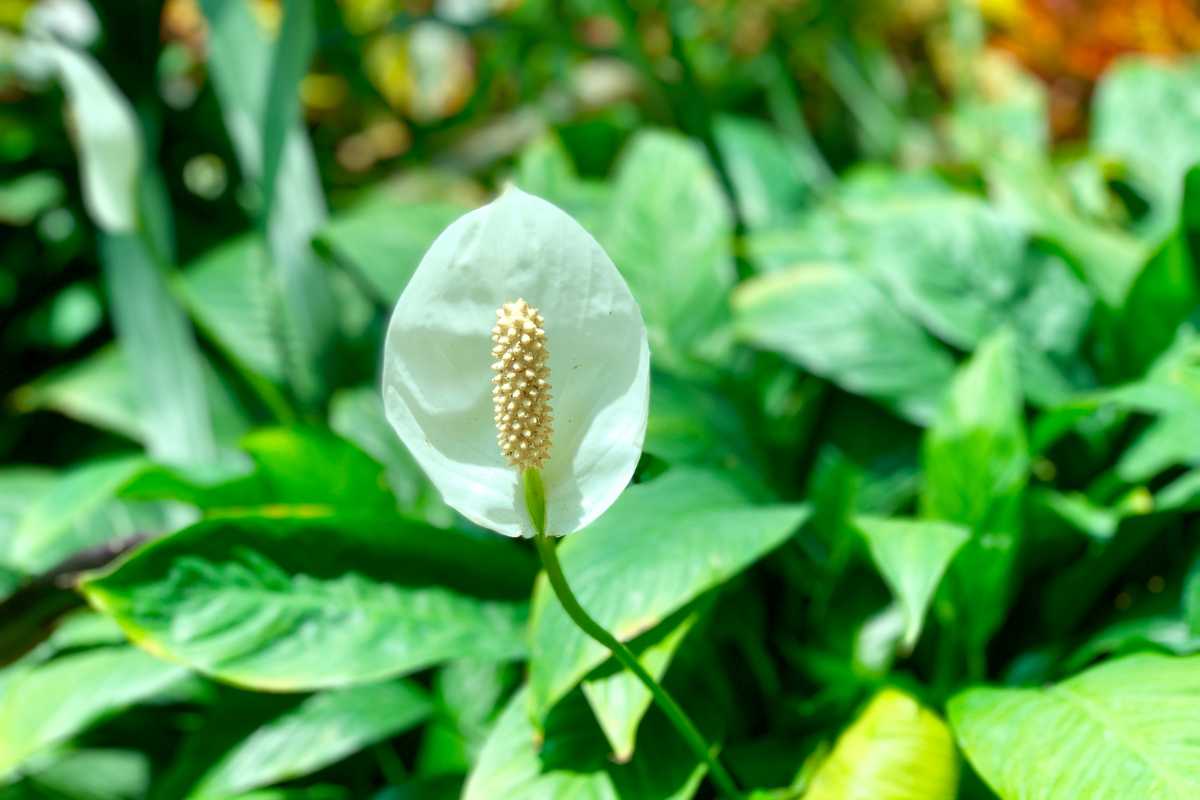
Peace lilies don’t like too much sun. If they get direct sunlight, their leaves can turn brown or black from sunburn. They need light, but too much can hurt them and make them look bad. If they stay in strong sunlight for a long time, it’s hard for them to get better.
Solution for Sunlight Exposure in Peace Lilies:
- Move your peace lily out of direct sunlight to stop it from getting sunburned.
- Make sure it still gets bright, indirect light. This helps it grow well without too much sun.
9. Peace Lily Leaves Blackening
If your peace lily’s leaves are turning black, it could be a sign of several issues. Blackening leaves may result from sunburn caused by direct sunlight, exposure to cold drafts, or underwatering.
Sometimes, it’s a sign of a bigger problem like a fungal or bacterial infection, which often happens when the plant gets too much water or the soil is not clean. When the roots or leaves are not healthy, it can make the whole plant sick.
Here’s how to fix blackening leaves on peace lilies:
- Start by cutting off the blackened leaves and any unhealthy roots.
- Move the plant to new, dry soil to help stop infections and use a fungicide if necessary.
- Keep the peace lily in a place with bright but indirect light.
- Be careful not to water it too much to avoid more stress or infection.
Learn more about why your peace lily leaves turn black in this in-depth guide.
How to Prevent Brown Tips, Leaves, and Flowers in Peace Lilies
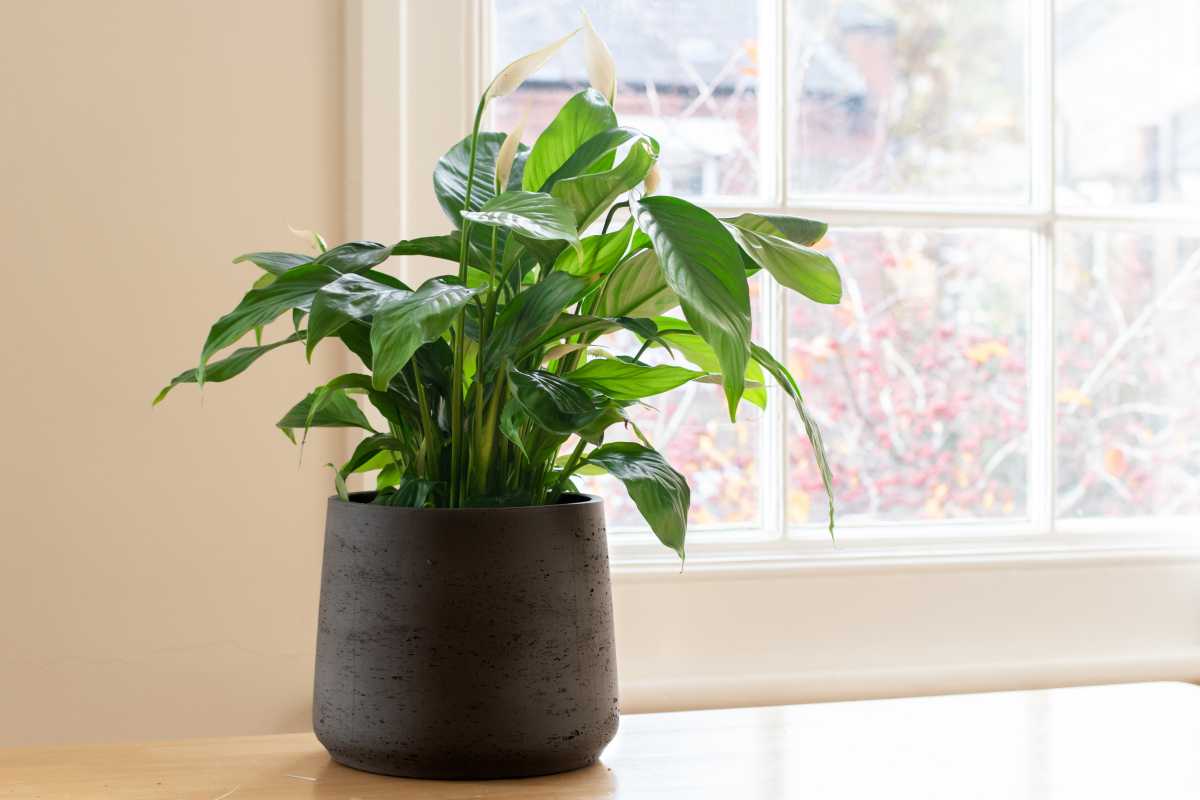
Good care of your peace lily from the start will help prevent your plant from developing brown tips, leaves, or flowers.
Keep these simple care tips in mind when caring for your peace lily:
- Light – The peace lily prefers bright indirect light, but can adapt successfully to lower and medium-light environments. Strong direct sunlight should be avoided to protect foliage from burning.
- Watering – Water your plant once or twice a week. The amount of water should be just enough to keep the soil moist and not wet or soggy. Mist your plant occasionally to increase humidity if your home is dry.
- Pruning – Trim away unattractive, brown or black leaves with clean scissors or a blade. Never remove more than one-third of the plant at the same time. Also, trim away damaged leaf edges to maintain the natural shape of the leaf.
- Keep Your Peace Lily Leaves Clean – Dust your plant’s foliage to help enable photosynthesis. Use a damp cloth to wipe each leaf clean. Support the leaf underneath while cleaning to avoid tears.
Discover more of why peace lily flowers turn brown in our comprehensive article.
Peace Lily Brown Leaves Final Thoughts
Peace lilies are beautiful tropical plants that thrive with proper care. To keep those green leaves looking healthy, remember a few key tips on peace lilies. They love consistent temperatures and bright, indirect sunlight. Avoid overwatering and make sure your plant has well-draining, fresh soil.
In warmer months, misting the plant or using a humidifier can help mimic their natural environment. Regular pruning and cleaning of the leaves in peace lilies will also support growth. With attention to these details, your peace lily will stay vibrant and flourish for years.
Check out these other articles to learn more about the peace lily:
Peace Lily Brown Leaves, Tips and Flowers FAQs
1. How Can I Prevent Root Rot in My Peace Lily?
To prevent root rot, ensure that your peace lily’s pot has adequate drainage holes and avoid letting it sit in soggy soil. Monitoring moisture levels and using rice hulls in the soil mix can improve drainage.
2. What Should I Do About Browning Leaves on My Peace Lily?
Browning leaves on peace lily leaf tips can indicate overwatering or direct sun exposure. Maintain a proper temperature range between 68°F and 85°F and keep the plant out of heat vents or strong sunlight.
3. Do Sheer Curtains Help Protect Peace Lilies from Direct Sun Exposure?
Yes, sheer curtains can help filter sunlight, providing the indirect light that peace lilies prefer while protecting them from harsh direct sun exposure that can lead to browning leaves.
4. How Can I Manage Temperature Fluctuations for My Peace Lily?
To manage temperature fluctuations, place your peace lily in a stable environment away from heat vents or drafts. Aim for a consistent temperature range to keep the plant healthy and thriving.
5. What Size Pot Should I Use for My Peace Lily?
Choosing the right pot size is crucial for peace lilies. Ensure that the pot allows for growth, has drainage holes to prevent excess water accumulation, and provides enough space for root development.
Check out these other articles to learn more about the Peace Lily:






